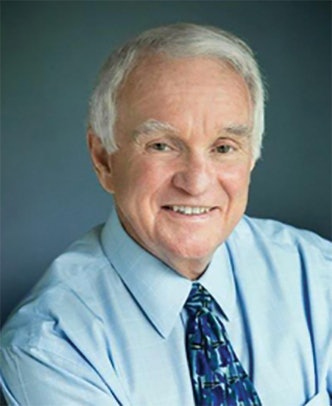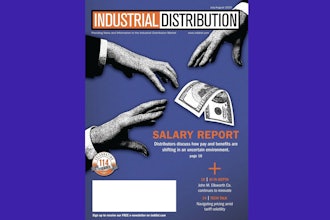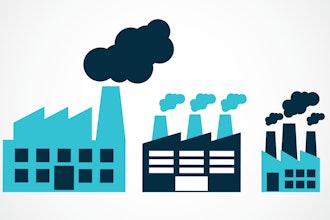
The role of the outside salesperson could be changing significantly as distributor management makes changes to their operations and the pandemic (hopefully) starts to end.
In fact, many sales experts believe that the outside salesperson’s role may continue to be morphed into an extension of the inside salesperson’s position as the industry adapts to the remote sales challenges that have taken place in the past 14 months.
Dave Kahle, (davekahle.com) a well-known sales trainer, speaker and author, says there already is a trend going back nearly two decades in which the role of the inside salesperson was increasingly complementing and, in some cases, replacing the outside salesperson.
“This certainly isn’t something new,” Kahle said in an interview. “This move has been taking place for some time, probably over two decades. But the pandemic has added fuel to the fire as the industry continues changing.”
JUNE 15 WEBINAR: Everything Wrong With the B2B Sales Model, and How to Fix It. Register here!
Kahle, who has trained thousands of salespeople and managers, elaborated on that point.
”Fifteen years ago, for example, one survey reported that 70% of surveyed purchasers said they would rather have a good catalog and knowledgeable inside contact than a traditional outside salesperson,” he says. “That tendency has been around for a long time, but now it has been given a figurative shot of steroids.”
Neal Benedict, owner and president of Sandler Training by Silver Brick Sales Solutions, agrees with Kahle.
In a recent podcast with the Hamer Marketing Group, Benedict noted that decision-makers have less time today to meet with salespeople who don’t have a clear agenda and a clear set of suggestions for helping them solve problems.
Changes to the Selling Approach
Kahle says the pandemic and move toward remote selling means salespeople must fine-tune their selling approach. Specifically, he says, outside salespeople need to change their selling techniques and adjust to working in an office rather than visiting clients on a regular basis. And for some salespeople who are used to in-person visits with customers, Kahle notes, that may be hard to do.
Some industrial companies already have made a switch whereby outside salespeople are spending four days in the office and one day on the road, he says.
These salespeople will have to sharply improve their zoom selling skills while working remotely since they may only have 15 minutes to meet with buyers via video.
“The quality of calls are going to become even more important,” he says. “Salespeople are going to have to be at the top of their game.”
It will be an adjustment as to how they sell themselves as well as their products to clients. At the same time, salespeople may be doubling the amount of calls they make to customers through their phone calls and not by in-person visits.
What is clear is that salespeople are losing one of their key strengths in not being able to read a client’s body language by losing these in-person visits, says Silver Bricks’ Benedict.
“You can see a client on Zoom. But you don’t get the full picture. “There’s the delay that’s there and the focus really is on the upper one-third of your body, your head movements,” he says.
“So again, there’s indicators there, but the way I communicate with you, now that I’m on the phone with you, or I’m on zoom with you still doesn’t give me the complete view for me to be able to use the same skills and techniques I’ve developed over time from a communication standpoint, so I have to adjust that as well.”
One critical area that outside salespeople will have to focus on is time management and could be a deciding factor in their success, he says. He says that an hour-long zoom meeting could be compared to a two-hour in-person meeting.
Some sales managers wonder whether all their outside salespeople can succeed in this new selling environment. A Sandler Research Training Survey released in March emphasized their concern about existing staffs. Only slightly more than half of the respondents said their existing sales teams showed the capability to succeed in a virtual post-pandemic world.
But salespeople aren’t the only ones who need training.
Noting the shift toward a more digital, virtual sales space, the survey asked sales managers and leaders if they had received any training on how to lead salespeople remotely.
More than half of all respondents reported getting zero training.
Building Relationships in a Post Pandemic World
Neal Benedict says outside salespeople must get better at carefully listening to the actual words being said by the customer “so he can quickly understand and react at a much faster pace.”
He also points out that much of the traditional interaction between the salesperson and customer has essentially gone online or simply been eliminated.
“Outside salespeople are going to have work on how to develop and possibly redefine relationships with customers with whom they had been meeting on a regular basis and often interacting with them socially,” he says.
Developing and enhancing those relationships will be more challenging as remote selling intensifies.
“What we need to think through is how do you continue to build on relationships when you can’t do the norms of social interaction and regular engagement?”
Although relationships still matter, Benedict says that it is different from the 1970s selling when salespeople and their customers might go on hunting or fishing trips with their customers. “Buyers today don’t want to establish a closer relationship unlike a few decades ago.”
At the same time salespeople must find customers they can add value to so that they can bring insights to customers on a regular basis, without being able to meet with them in person.
“I think those changes are really what people are thinking through right now,” he adds.
Salespeople, he says, must adjust their framework of thinking around the fact that the things that made them “as good as I was have been taken from me.”
Despite these challenges, outside salespeople will continue to bring value to their customer “but in a slightly different way.”
While those shifts continue and in some cases intensify, what is clear is that both distributor management and customers have discovered that phone and video technology are far more efficient than face-to-face live visits.
Dave Kahle emphasizes the economics of the equation.
The typical outside sales call, he says, could cost a company somewhere between $150-$300 per call, whereas the typical inside, proactive phone call costs a fraction of that — about $5.
In fact, Kahle points out that some purchasers insist on remote technology use by their vendor’s salesperson as a means of adding efficiencies to the buying process in two ways: reductions of time spent during a sales call and communicating with fewer salespeople.
Meanwhile, costs are being taken out of the sales process because of these changes in the selling process. Expenses, such as car allowances is just one such example, he says.
 Keough
Keough
“For 20 years I’ve given the same answer, “ he says adding outside salespeople numbers may drop, predicting there will be “fewer and better” ones available to service their customers.
Could that future scenario be here already? Time will tell.
Jack Keough is president of Keough Business Communications. He was editor of Industrial Distribution for 26 years. You can contact him at [email protected]






















